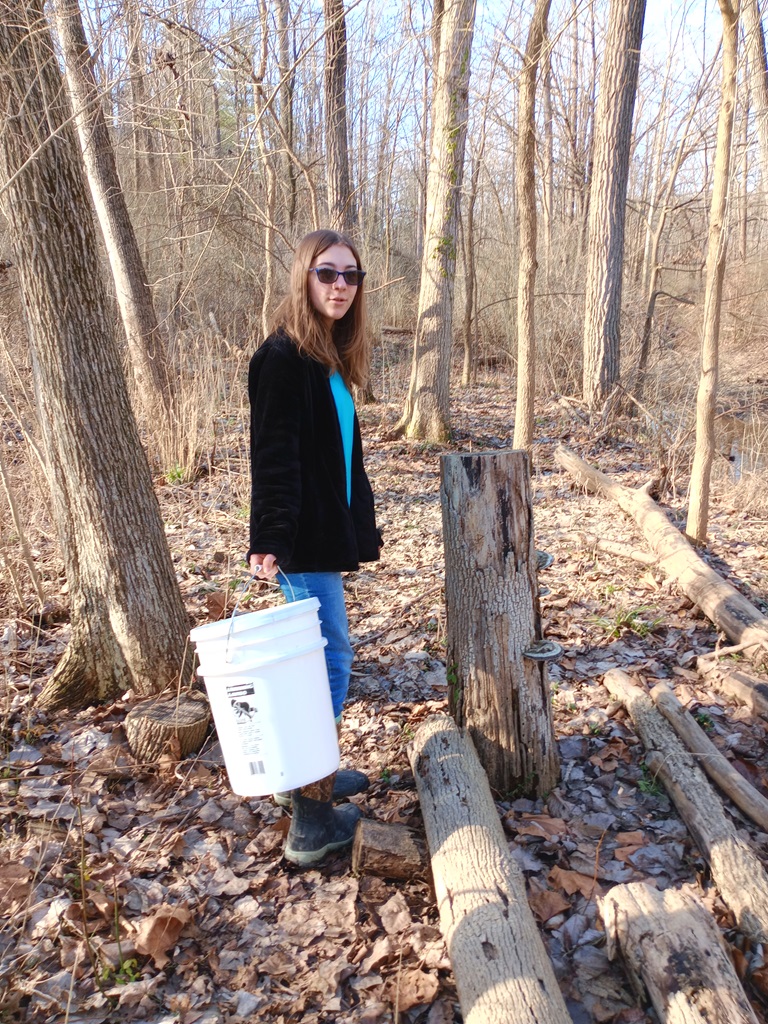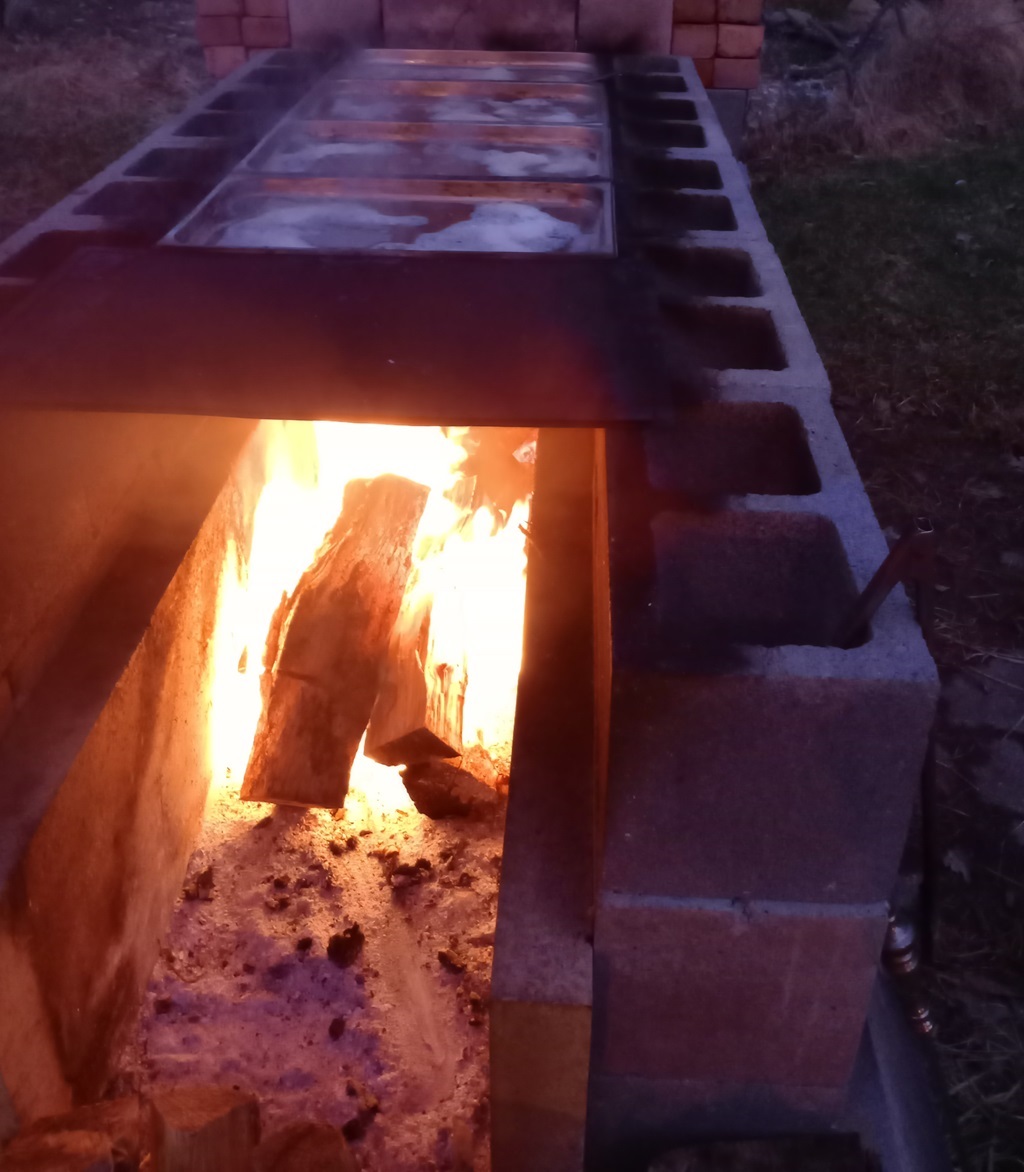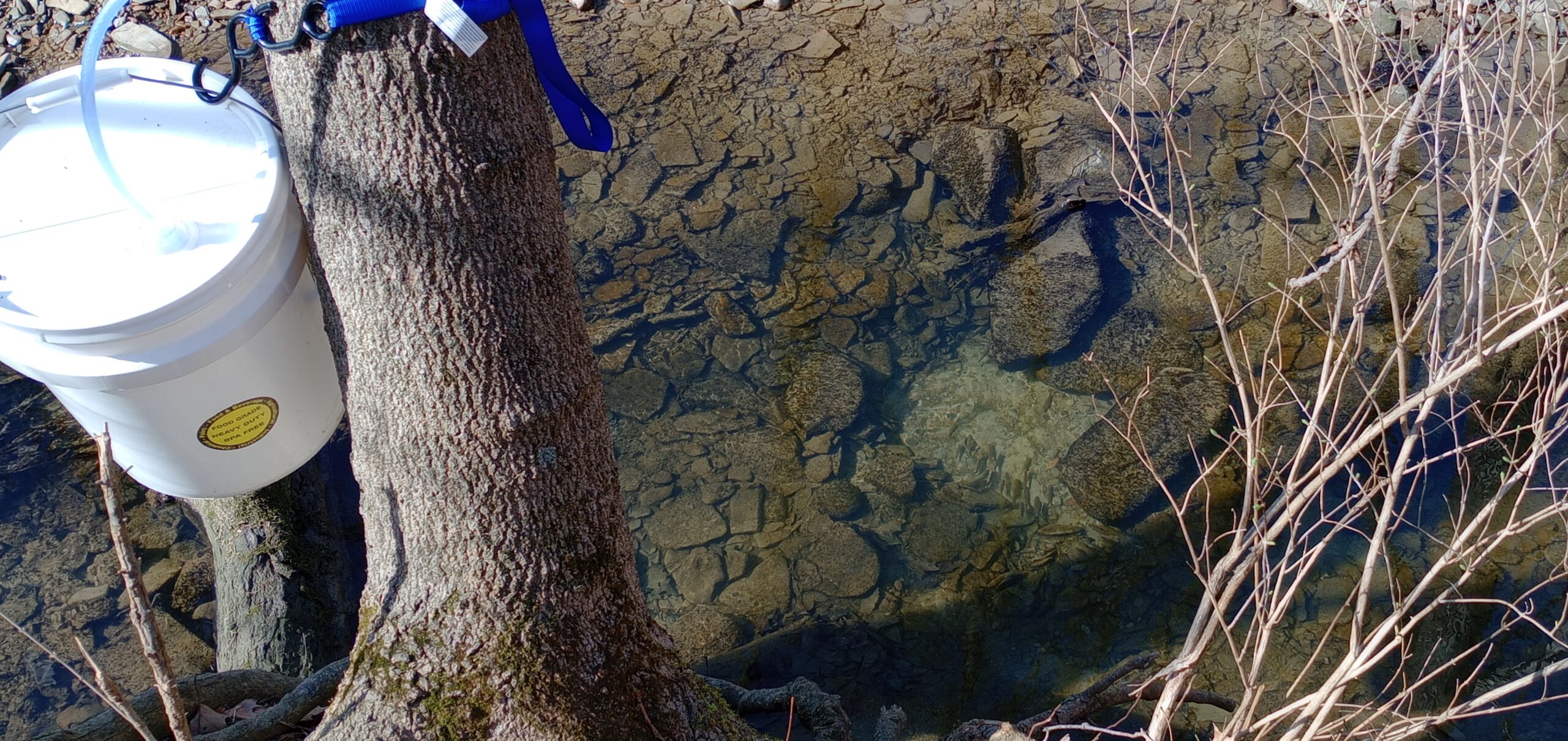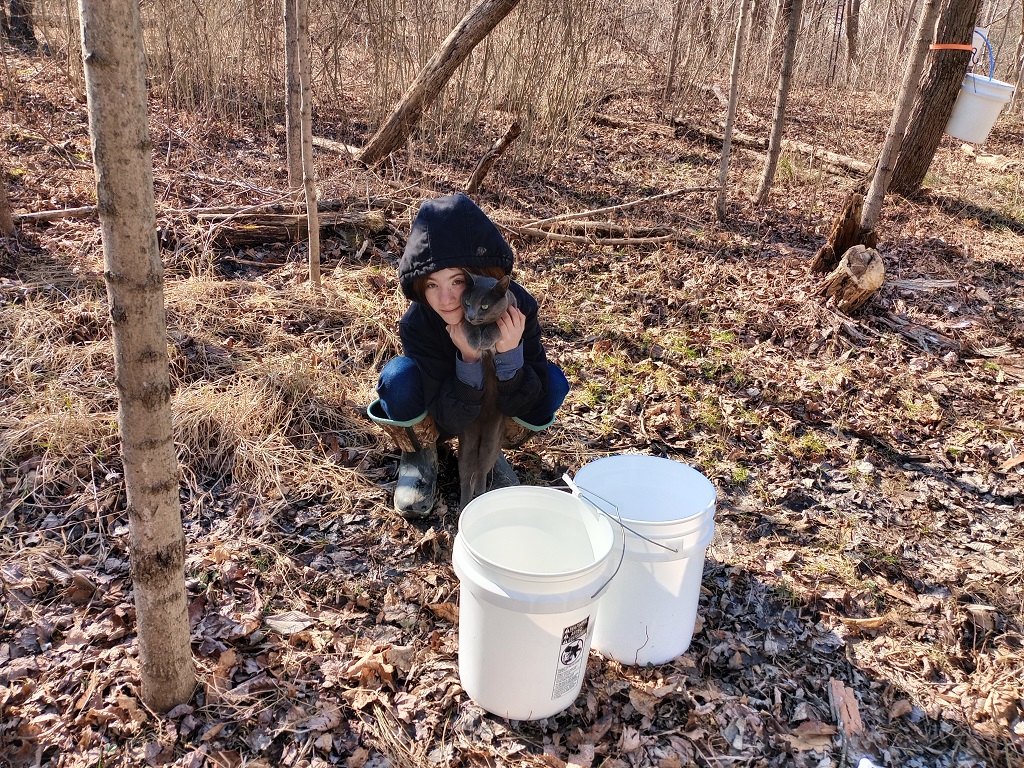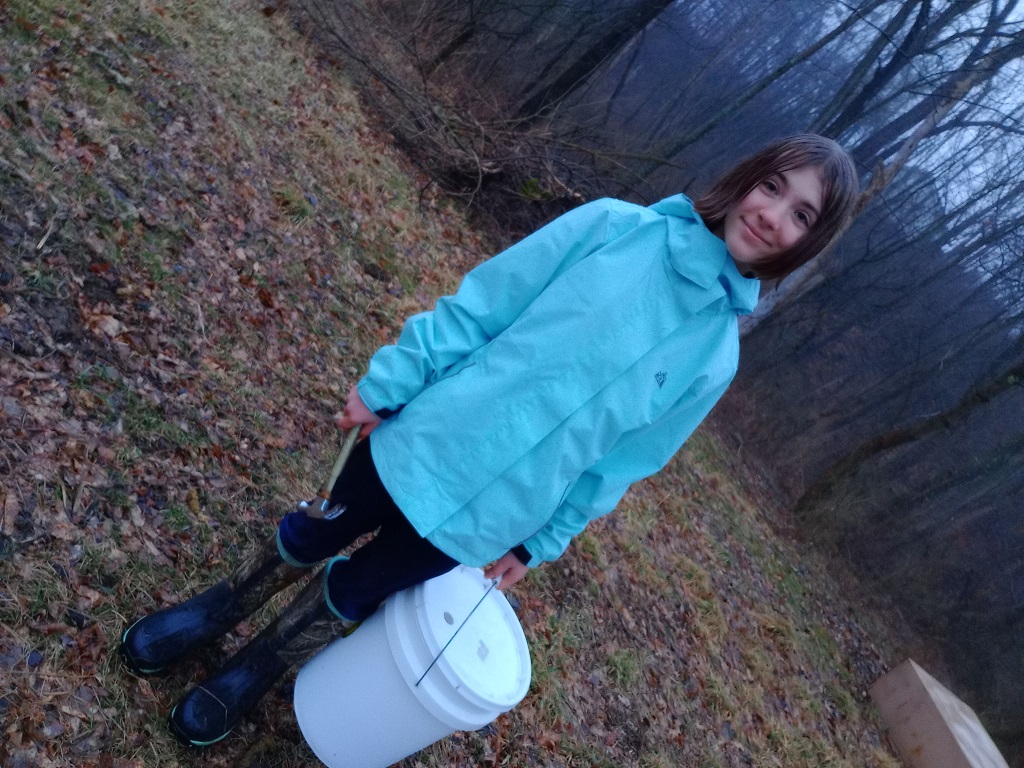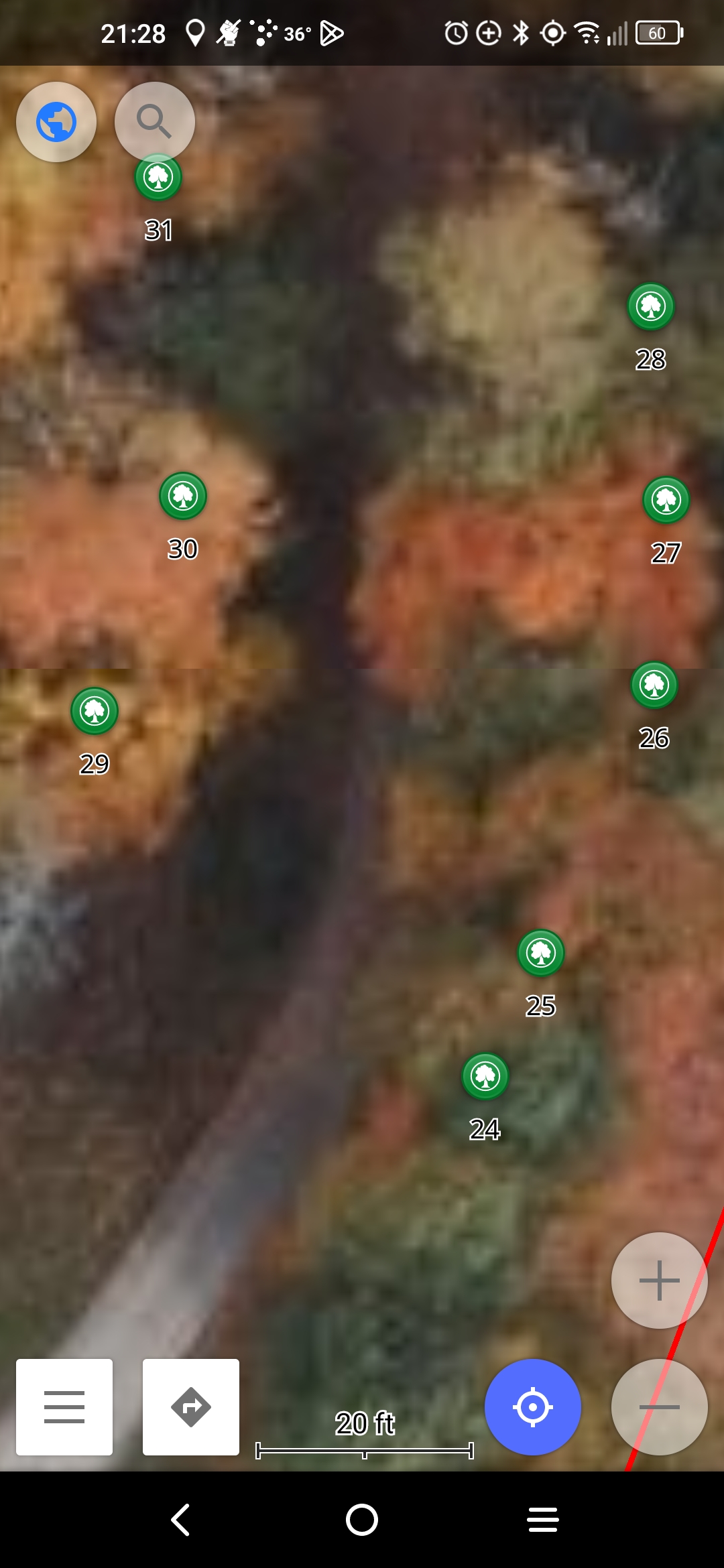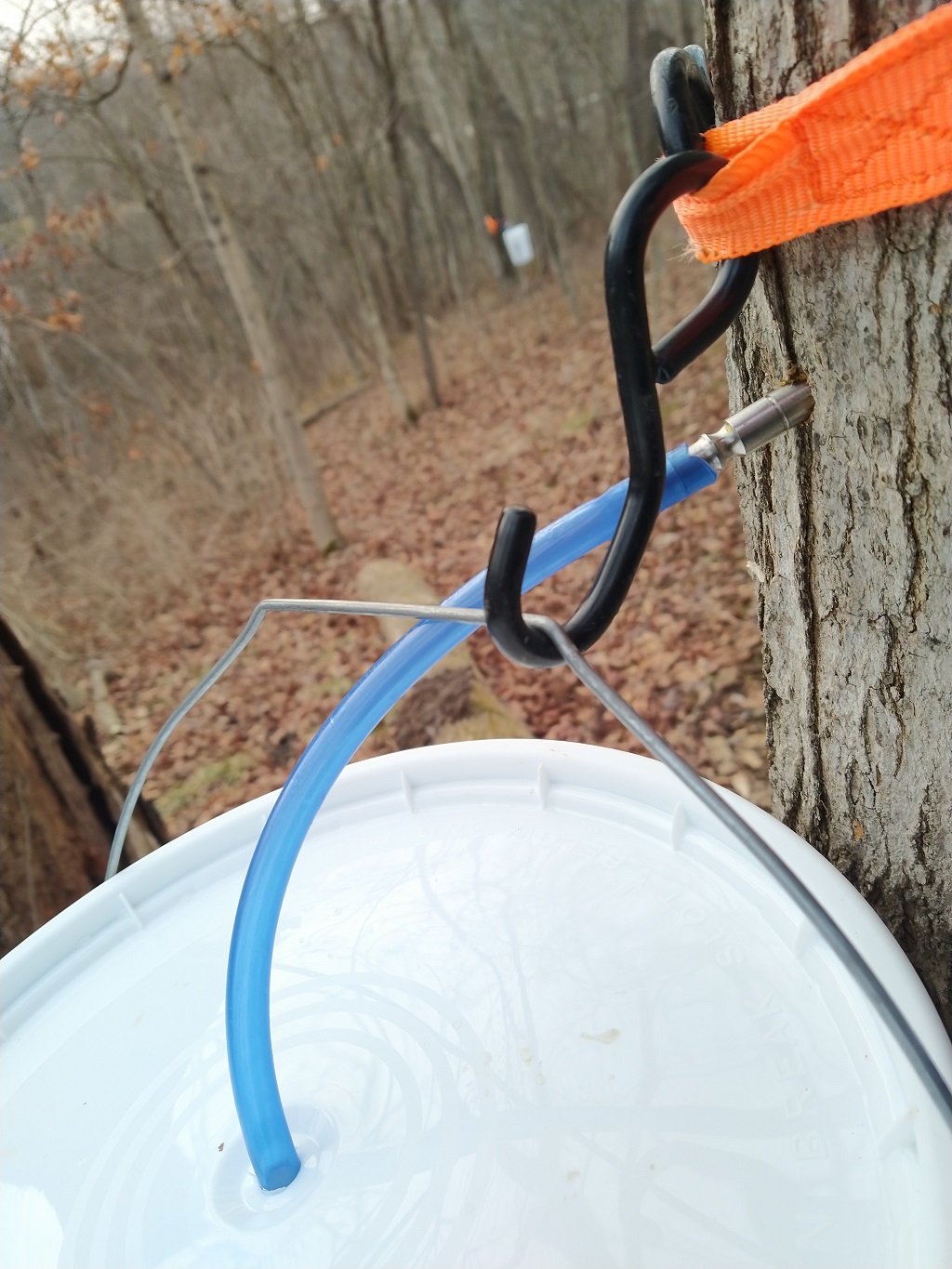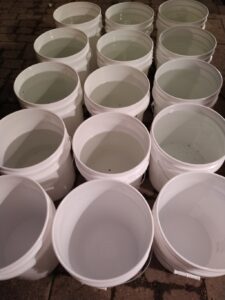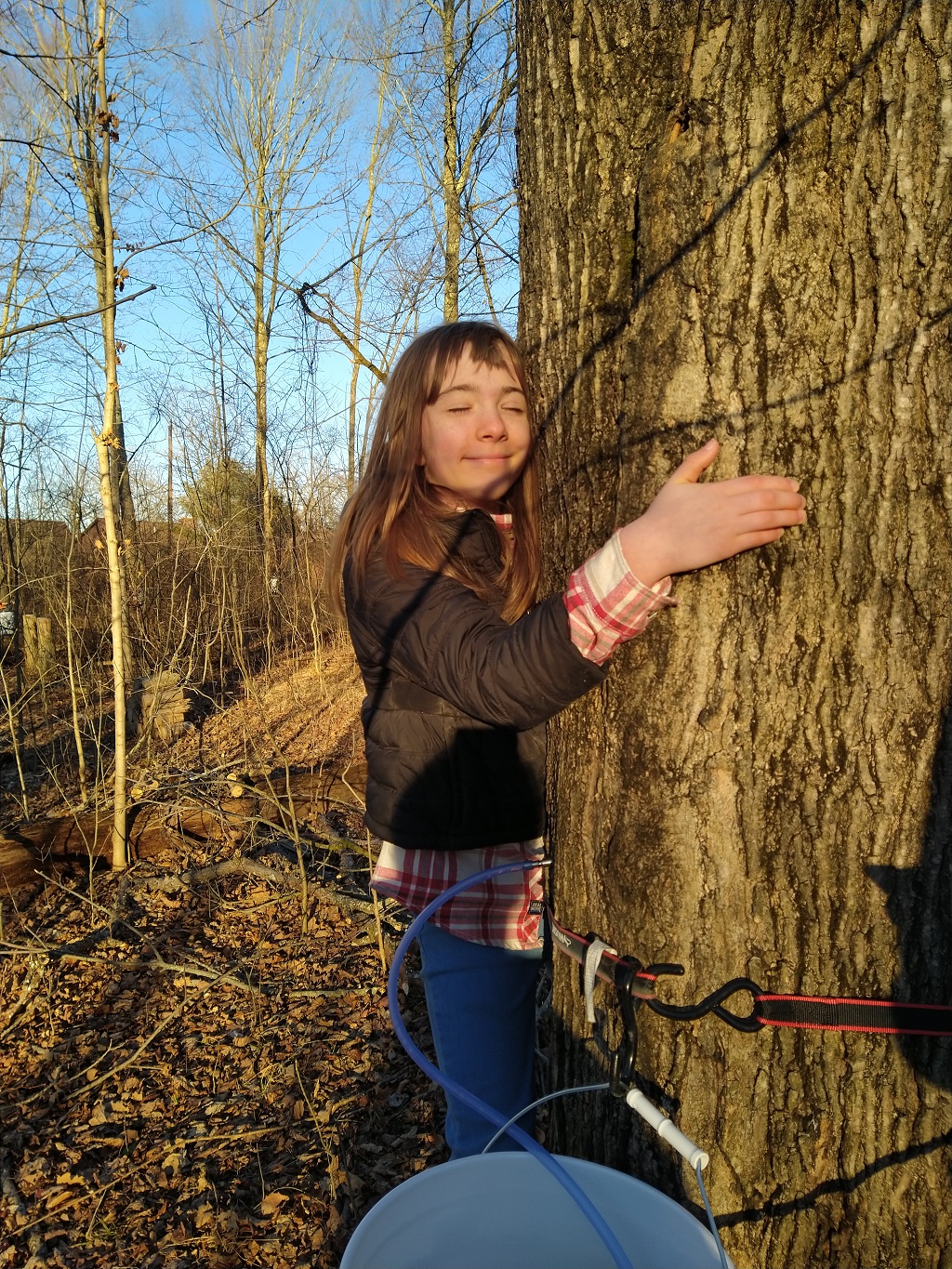Tag: maple trees
Boiling
Collecting Sap
2024 Maple Season: Still Collecting Sap
2024 Maple Season: Sap Collection
We started collecting our maple sap — somewhere around 80 gallons of sap which will make 2 gallons of syrup. This is the first year we had kitten helpers – they were rather puzzled by the ratchet straps and buckets on the trees, but they enjoyed that we were playing in the woods with them. Even if they couldn’t figure out what our game was.
2024 Maple Season: Tree Tapping
We’ve got 43 maple trees and two black walnut trees tapped. 18 maples were tapped yesterday in the back woods (plus the one right by the driveway).
The big maple by the river, that I’ve been waiting to tap since we found it … had nothing! Hopefully sap starts flowing there too. The other trees, though, were drip, drip, dripping steadily
Maple Mapping
For the last few years, we’ve talked about mapping out our maple trees — we track which ones we tap, when we tap them, and occasionally try to track how much sap the tree produced. Which is difficult when the tree is labeled as “second down from planter on driveway” or “the next, next one by neighbor”. It seemed like we should be able to use our phones to tag each location — ideally while there are still leaves on the trees so we could denote them as sugar, red, etc.
We settled on an open source app that uses Open StreetMap — https://github.com/osmandapp/OsmAnd/ — there’s no convenient way for Scott and I to simultaneously edit the data set, but we can export the file on one phone and import it onto the other so we are both looking at the same points. Each tree is numbered, and there is a note with the type of tree and how many taps.
Now we know we are at tree #27 (the phone’s location will show up as a blue dot).
Maple Tapping
Instead of taps with a hook for a bucket (which seemed, to me, like it would put a lot of stress on the tree!), we use ratchet straps to hold our maple buckets. One end of the “S” is passed into the fabric loop that holds the other “S” — and that other “S” becomes our bucket hook. I like the bright orange straps because it makes finding trees in the woods very easy (bright white buckets look obvious too, but they can hide behind the tree).
Our first set of buckets has large holes drilled into the lids — which are great for larger trees with multiple taps. But the new buckets we bought this year have tube-sized holes to prevent rain from leaking into the bucket.
2023 Maple Season – First Sap Collection
We tapped trees for the last few days and have our first sap collection — thirteen five-gallon buckets (not completely full, but around 4.5 gallons per bucket … so not 65 gallons but at least 58.5 gallons) waiting to run through the reverse osmosis.
This year, our starting sap measured around 1.006-1.008 SG at around 50 degrees. The reverse osmosis is running at just under 100 psi (at 100 psi, we are not getting any sugar water out). The output sugar water is measuring at 1.022 … which is 3.7 times as concentrated as before we filtered the sap.
The flow rate is about a gallon every ten minutes, or six gallons an hour.
